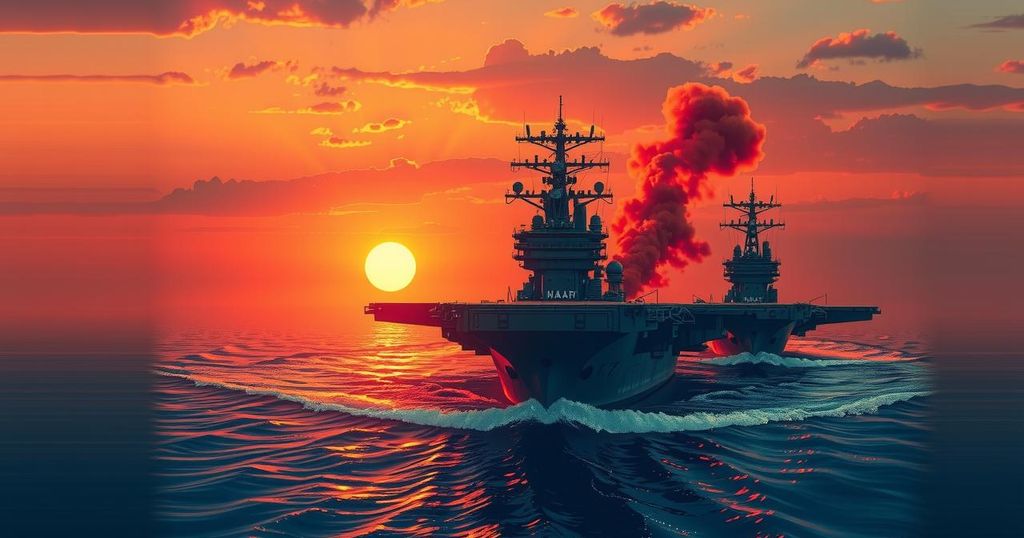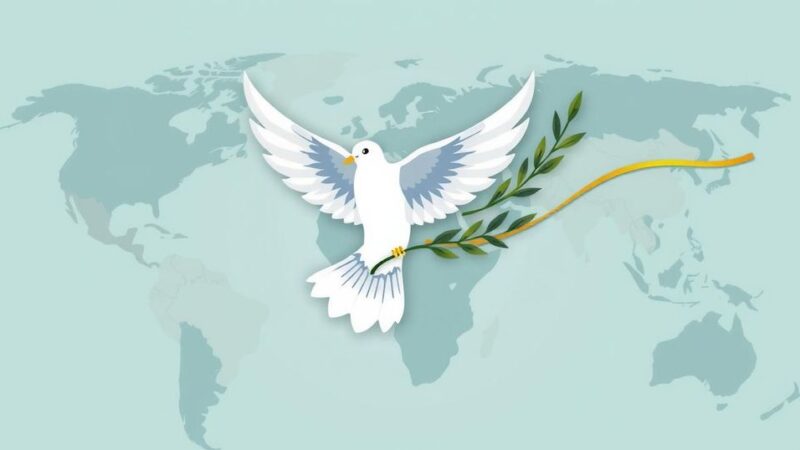Defense Secretary Hegseth has ordered the USS Harry S. Truman to remain in the Middle East for an additional week to combat Yemen’s Houthi terrorists, maintaining two carrier strike groups in the region. The U.S. has intensified strikes against Houthis since mid-March, with over 1,000 targets hit as part of Operation Rough Rider. A new national defense strategy is also being drafted to outline military priorities moving forward.
Defense Secretary Pete Hegseth has decided to extend the deployment of the USS Harry S. Truman aircraft carrier in the Middle East. This extension, announced Thursday, will keep the carrier and its strike group in the region for an additional week, aimed at strengthening U.S. forces against Yemen’s Houthi terrorists. This marks a significant operational shift as the U.S. now maintains two carrier strike groups in the area.
The USS Truman has been active since late March, when Hegseth commanded its deployment to amplify U.S. airstrikes on the Iran-backed Houthi group. The latest order comes in response to a formal request from Gen. Erik Kurilla, the head of U.S. Central Command. Alongside the Truman, the San Diego-based USS Carl Vinson carrier is currently stationed in the Gulf of Aden.
As of now, the Truman, accompanied by two destroyers and a cruiser, is positioned in the Red Sea. Military officials, who spoke on the condition of anonymity, have shared that U.S. forces have engaged in daily airstrikes against the Houthis since mid-March, following President Trump’s directive to utilize what he called “overwhelming lethal force” until the militant group halts its attacks on shipping in the Red Sea.
The U.S. Central Command has stated that it is engaged in an “intense and sustained campaign” against Houthi forces. Reports indicate that over 1,000 targets have been struck in Yemen since the inception of Operation Rough Rider. If there are no further extensions, sailors from the Truman could potentially return home as soon as next month.
This recent escalation follows last year’s extended deployment of the USS Dwight D. Eisenhower, which was involved in fierce combat operations in the region. The Houthis have been targeting both military and commercial vessels with missiles and drones, complicating trade routes through the Red Sea, a crucial maritime corridor for global commerce.
Despite a temporary ceasefire in late 2023, the Houthis resumed their attacks in March as the U.S. ramped up military efforts against them. Hegseth’s latest actions also extend beyond military engagements; he has tasked the Defense Department with crafting a new national defense strategy due by the end of August. This strategy will shape the military’s focus for the coming years and may reflect significant personnel cuts as well as a shift towards Trump’s “America First” approach.
In summary, Defense Secretary Hegseth’s decision to extend the USS Harry S. Truman’s deployment underscores the heightened military focus on combating the Houthis in Yemen. The U.S. continues its offensive with increased airstrikes, aiming to secure vital maritime routes in the Red Sea. Additionally, the development of a new national defense strategy signals broader shifts in military priorities under Hegseth’s leadership.
Original Source: www.reviewjournal.com






